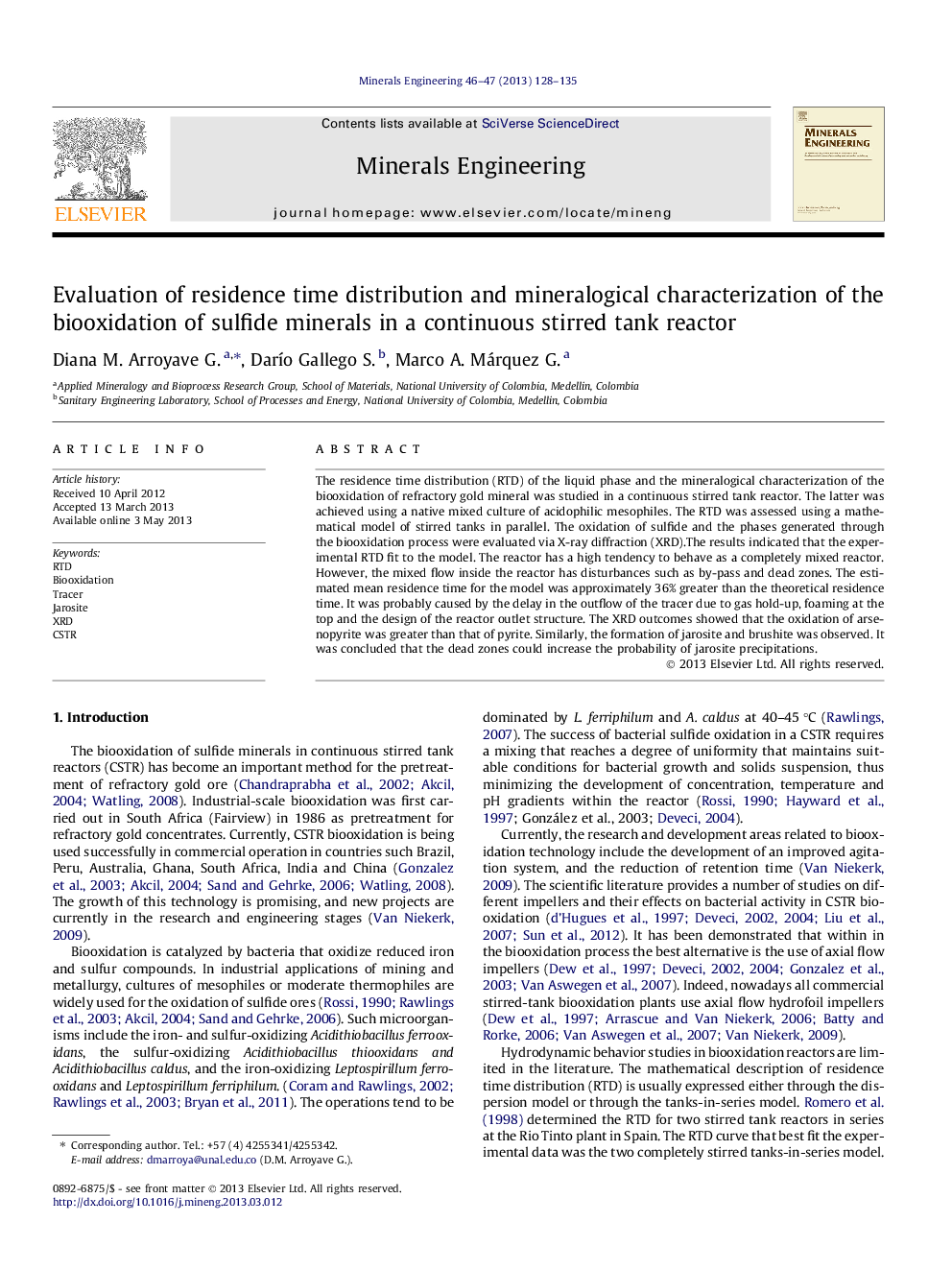| Article ID | Journal | Published Year | Pages | File Type |
|---|---|---|---|---|
| 6673715 | Minerals Engineering | 2013 | 8 Pages |
Abstract
The residence time distribution (RTD) of the liquid phase and the mineralogical characterization of the biooxidation of refractory gold mineral was studied in a continuous stirred tank reactor. The latter was achieved using a native mixed culture of acidophilic mesophiles. The RTD was assessed using a mathematical model of stirred tanks in parallel. The oxidation of sulfide and the phases generated through the biooxidation process were evaluated via X-ray diffraction (XRD).The results indicated that the experimental RTD fit to the model. The reactor has a high tendency to behave as a completely mixed reactor. However, the mixed flow inside the reactor has disturbances such as by-pass and dead zones. The estimated mean residence time for the model was approximately 36% greater than the theoretical residence time. It was probably caused by the delay in the outflow of the tracer due to gas hold-up, foaming at the top and the design of the reactor outlet structure. The XRD outcomes showed that the oxidation of arsenopyrite was greater than that of pyrite. Similarly, the formation of jarosite and brushite was observed. It was concluded that the dead zones could increase the probability of jarosite precipitations.
Related Topics
Physical Sciences and Engineering
Chemical Engineering
Chemical Engineering (General)
Authors
Diana M. Arroyave G., DarÃo Gallego S., Marco A. Márquez G.,
